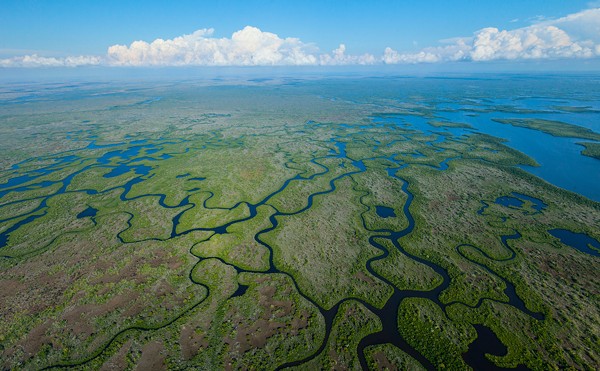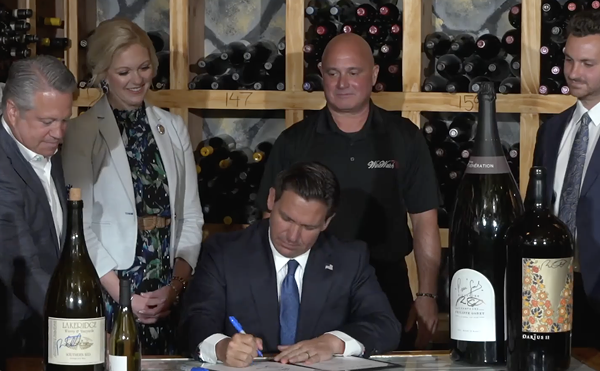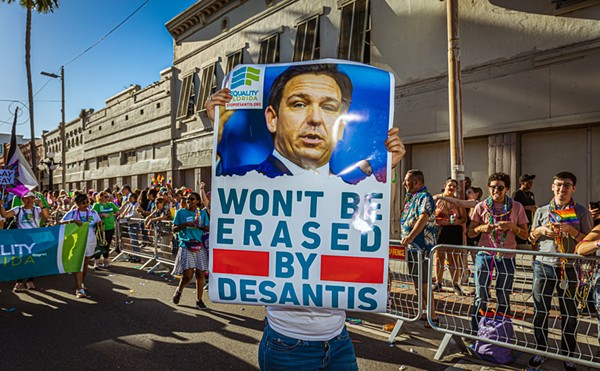Byron Dorgan, a North Dakota Democrat, took to the Senate floor on Feb. 27 with an impassioned plea for a small federal subsidy that has fueled an explosion of activity in the wind-power industry. "Congress is messing around back and forth, stuttering, and not getting it done," Dorgan complained.
The so-called wind production tax credit (PTC) Dorgan was championing is tiny as subsidies go — over a decade it has cost roughly $55-million — and remarkably effective. Wind is the fastest-growing energy industry in the world, and last year was the U.S. wind-power industry's best ever, with power capacity equivalent to that of roughly six coal-fired power plants coming online — minus coal's pollution. "The exciting thing is, (wind-power growth) is happening all over the country — it's not just California," says Christine Real de Azua, a spokeswoman for the American Wind Energy Association.
Nevertheless, the wind PTC struggled to get a proper hearing. Finally, on March 8, Congress approved a meager two-year extension, which wind's supporters had tacked onto the unemployment insurance bill. That's a short time frame for investors to do much planning, though, so Dorgan and others continue to push for at least a five-year extension.
Judged just on its merits, this would probably pass with bipartisan support. But Congress is tentatively committed to gargantuan new subsidies for coal, oil, gas and nuclear power — the only disagreement so far is exactly how obscenely enormous they will be. So the five-year wind PTC will be held hostage to provide green window dressing for less admirable legislation. The Republican energy plan, touted in the President's State of the Union address, would dole out $35.6-billion over 10 years — or about $125 per American — to the oil, gas, coal and nuclear industries. The Democratic Senate energy bill is larded with almost as many tax-funded mega-giveaways to polluters. By contrast, the wind PTC has, to date, cost every American about 19 cents.
The good news is that wind power and other renewables don't have to depend on federal leadership. An energy revolution of wind, solar and clean-burning hydrogen fuels is fast approaching. Thanks to engineers and entrepreneurs, farsighted state governments and business realities, renewables have been steadily dropping in price. They are winning victories in the marketplace even while swimming against the federal riptide of subsidies to Big Oil and King Coal. Greenery, Market Forces, InnovationAmerica is the Persian Gulf of wind. The Energy Department estimates that wind in the Dakotas alone could meet two-thirds of America's electricity needs; Texas could meet the last one-third. But there are good winds across America — in a ranking of the top states for wind, California, the wind-power poster-child, comes in at a lowly 17th. Solar power is equally bountiful: The Union of Concerned Scientists says 100 square miles in Nevada could produce enough solar electricity to power the nation.
Worldwide, solar — like wind — is experiencing growth rates reminiscent of the computer industry. Germany has harnessed a world-leading 6,000 megawatts of wind power — roughly equal to 20 coal-fired power plants — and has decided to phase out nuclear power entirely by 2025. Japan and Germany are putting photovoltaic solar panels on thousands of roofs, while Spain and the Philippines last year agreed to bring solar electricity to 400,000 rural Filipinos. A similar program has been underway in South Africa since 1999, with Nelson Mandela's vocal support. And Ireland just announced what will be the world's largest offshore wind park. Eddie O'Connor, managing director of Ireland's utility Eirtricity, says offshore wind could provide two-thirds of Europe's electricity by 2020. "The resource is there, the technology is proven, the costs continue to drop — all that is needed is the political will to see it happen," O'Connor says.
Most important, wind and solar power can now be efficiently stored by using them to create hydrogen, a fuel that generates only drinkable water as waste. Electricity generated from wind or sunlight can be used to zap water — "electrolyze" it — to harvest the H from H2O. That hydrogen can then be used in fuel cells to produce heat and electricity or to power automobiles. Lester Brown of the Earth Policy Institute envisions wind farms producing electricity by day and hydrogen for cars by night. "None of this is as pie-in-the-sky as it sounds," reported Fortune magazine in November 2001. "Potent commercial forces are bringing the hydrogen economy along faster than anyone thought possible only a few years ago."
Britain has already announced that every 10th car sold there by decade's end must be powered by hydrogen or some other zero-emissions fuel. Hydrogen fuel-cell systems can be found across New York City — from the Conde Nast building to sewage treatment plants to a Central Park police station — and across America — from a post office in Alaska to the space shuttle. Automobile and oil companies have set up well-funded hydrogen-fuels divisions, and major car companies are racing to bring a hydrogen car to market. Toyota intends to start selling one in January of next year. "Greenery, market forces and innovation are reshaping our industry and propelling us inexorably toward hydrogen energy," a Texaco executive told Congress last year. The executive director of advanced technology vehicles at General Motors agreed, telling a petrochemicals conference, "Our long-term vision is of a hydrogen economy." No less a person than Henry Ford's great-grandson, Ford Motor chairman William Ford, says hydrogen will put an end to "the 100-year reign of the internal-combustion engine."















